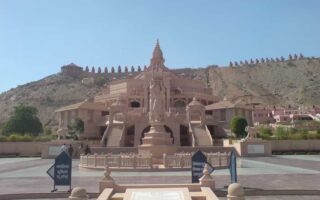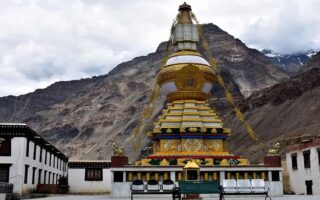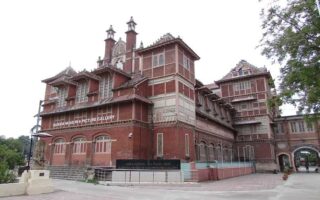At a Glance:
Region: Assam
Forms of Bihu: Magh Bihu, Bohag Bihu & Kati Bihu
Relevance: Assam’s National festivals
Dance of: Bihu
Bihu dance form is belongs to the folk dance forms of Assam state and it is very much famous. From the name of the dance, you can guess that it is connected to the Bihu festival. This festival is celebrated by the energetic and glorified population of Assam state. The festival is a major celebration of various stages of cultivation and it is enjoyed by the Assam’s regional people, they forget their creed, religion and caste and join the celebration. Bihu festival’s includes 3 different forms of celebration in single Assam state. One of the Bihu festival form held during the April, second one during the month of middle October and third Bihu festival comes during the middle January month. Even if it is a festival but it does not contain any connection religion. In the every year people of Assam state celebrated it. As per the three different Bihu dance form, each Bihu includes the various periods as per the farming calendar. The Magh Bihu celebrates the festival at the ending of harvesting period, on the start of New Year Bohag Bihu celebrates the festival and Kati Bihu enjoy it on the transplanting and sowing the paddies. The Magh Bihu is known as a Bhogali Bihu, Bohaag Bihu is known as a RongaliBihu, Kaati Bihu is known as a Kongaali Bihu etc.
As per the other Assamese population, the Sonowals community is also believed to be RongaliBihu as this community’s traditional festival. The major aspect of the Bihu festival is young girls & boy’s dance, they dance in two different groups on the beats of pipes and drums. On the occasion of the Bihu festival, the folk women clean the clothes and house and they make the exclusive delicacies of Bihu festival such as Pitha&Chira etc. The folk male is keeps on busy in the search of needful aspects like Tara Pogha means cattle’s ropes, they use it to make the pieces of the vegetables and Tara like Brinjal, raw Turmerics, Gourd etc and they also prepare GoruBihu for next day. The beginning day of the Bihu festival is committed to cattle, bullocks and cows, people offer them as a livelihood aspect. On that day, early morning the bullocks and cows are bathed as per the custom of festival in the water if river and people cut the vegetables, they throw it among the animals. During the afternoon time, people tie the animals to Tara Pogha and they make animals happy by offering the special cakes. All the new generation girls and boys have the latest costumes on that particular day, later on taking the joy from the Bihu’s exclusive offerings. They enjoys the egg fight competition, they sings the romance and love songs. This type of togetherness is known as MukoliBihus. The festival songs are very much famous within the all parts of regional people. The songs, which are folk type, are connected to the Bohag Bihu, known as Bihu songs or Bihu Geets. On another day of the festival, which is Bihu Husori&Manuh Bihu are introduced at the place of Namghar, it means hall of praying.
Bohag Bihu or Rongali Bihu
It is one of the 3 Bihu festivals that are non-religious and secular. This festival is all about much enjoyment and it is a symbol of beginning of spring season. Sonowal community’s essential festival is Rongali Bihu, it holds on the festival of Sankranti or which is called as Chot, on fourteenth April, the festival continues till fortnight.
Magh Bihu or Bhogali Bihu
This festival is too called as Bhogali Bihu. This is belongs to word Bhoga, the meaning of the Bhoga is enjoyment or eating. On the festival the harvesting activity gets over and all the people get excited for the upcoming days. So that’s why it is a festival of harvest. The eve of the Bihu dance is known as an Uruka. The last day of the festival is called as Puh, females of tribe become busy in the making pf rice cake and more delicacies. The major part of the Uruka is construction of Meji and having the tasty food in the night. Meji is a huge temple; it is similar to firewood structure, on the outside area of the temple you will get to see the structure, which has been arranged like one piece on other piece through the poles of the bamboo. Close the makeshift cottage, there is a Bhelaghar. The entire night of the festival celebrated by singing, feasting and dancing. On the starting day of the Magh, all the people get ready on the early morning and they arrange a fire at Bhelaghar&Meji; people offer the rice, Til and many more eatables, which are made to fire or Agni. Later the Bhelaghars&Mejis are burnt, all the people sit there and start signing NaamKirtana. On this particular day people don’t eat the rice in the lunch and also the curry, but Pitha, Chira and curd these things they eat. There is one more delicacy that is WahKarai, it is mixture of black gram, rice, ginger pieces and sesame; this one is provided to males for chewing, it is cooked in oil.
Kati Bihu or Kangali Bihu
It is also known as Kangali Bihu. When this festival starts, the paddy seedlings start to grow. During the evening time; people make the offerings by Tulsi plant within the courtyard. They lighten the small lamps near the Tulsi plant’s feet. Then after, people do the rituals for enhancement of crops. The relevance of the Bihu is majorly present on the town side; here the farmers goes to their own fields and they light up the sky lamp, called as AkashBanti through the big bamboo, to secure from insects and pests.


